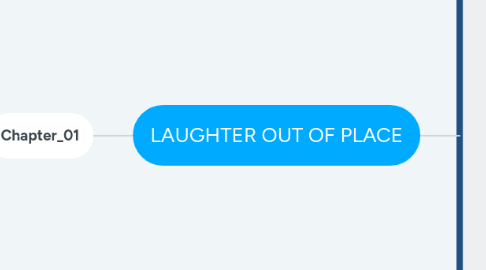
1. Introduction
1.1. Laughter: Act of disobedience
1.1.1. Black Humor: Bad Taste
1.1.2. Class War: Wealthy vs Poor
1.1.3. "Weapon For the Weak"
1.2. Povo
1.2.1. Popular Culture Unofficial
1.3. Moments
1.3.1. Middle and Lower class activism
1.3.2. Female Weapons
1.3.2.1. Sharp tongue and wit
1.3.3. "Bloodless"
1.4. Hidden Protest
1.4.1. Folktale
1.4.2. Gossip
1.4.3. Rumors
1.5. Hegemony
1.5.1. "leadership or dominance, especially by one country or social group over others."
2. Chapter_01
2.1. Words
2.1.1. Black Humor
2.1.1.1. "She held out the index finger of her right hand and drew a line across her neck while sticking out her tongue, throwing an eye-popping glance at the low ceiling."
2.1.1.2. “Morreu e fedeu,” she declared. “He’s dead and decayed.”
2.1.1.3. Humor about the wealth, but also of one's own poverty
2.1.1.4. Mocks the world
2.1.1.5. Masks one's feelings from the despair
2.1.1.6. Type of protest
2.2. Age
2.3. City Layout
2.3.1. Wealth
2.3.2. Poverty
2.3.2.1. City Edge
2.3.2.2. Unpaved Roads
2.3.2.3. Cement homes
2.3.2.4. Favela
2.3.2.4.1. Shantytowns
2.3.2.4.2. Built on eachother
2.3.2.4.3. Sharing walls
2.3.2.4.4. Small corridors between units
2.3.2.4.5. Generational Living
2.3.2.4.6. Rat infested
2.3.2.4.7. Dirty
2.3.2.4.8. Unregulated Development
2.4. Transportation
2.4.1. Wealth
2.4.1.1. Private
2.4.1.1.1. "I felt extremely fortunate to have been able to arrive in this way with Katy in her car; I had usually made the trip by bus, and through the crowds of bodies had to keep watch for my mental landmark—a particular motel that marked the entrance to Felicidade Eterna—squeeze my way to the front of the bus, and then, once out of the bus, figure out how to cross over the lanes of swiftly moving traffic to the other side."
2.4.2. Poverty
2.4.2.1. Public
2.4.2.2. City Edge to Core
2.4.2.3. "Dark-Skinned" Passengers
2.4.2.4. Mechanical Fixing
2.4.2.4.1. Non-Functioning
2.5. Mental State
2.5.1. Friendship
2.5.1.1. Wealth
2.5.1.2. Poverty
2.5.1.2.1. Strains
2.5.1.2.2. Leaning on one another
2.5.2. Community
2.6. Items
2.6.1. Poverty
2.6.1.1. Television and Radios
2.6.1.1.1. Tools of varying ages and quality
2.6.1.1.2. Found in almost every household
2.6.1.1.3. Used as background noise
2.6.1.1.4. Telenovela
2.6.2. Wealth
2.7. Religion
2.7.1. Gods
2.7.1.1. Universal Groups
2.7.1.1.1. Wealthy and Poor
2.7.1.1.2. Kardecist
2.7.1.1.3. Candomble
2.7.1.1.4. Umbanda
2.7.1.1.5. Color
2.7.1.1.6. Ritual
2.8. Life
2.8.1. Politics
2.8.1.1. Government
2.8.1.1.1. Anti-Communist
2.8.1.1.2. Anti-Russian
2.8.1.1.3. Anti-Cuban
2.8.1.2. Protest
2.8.1.2.1. Music Genre
2.8.2. Social
2.8.2.1. Raw
2.8.2.1.1. Violent
2.8.2.1.2. Classism
2.8.2.1.3. Power embedded within the culture
2.8.2.2. Carnival
2.8.2.2.1. Social Classes Barriers Break
2.8.2.2.2. Wealthy parade with low-income
2.8.2.3. AIDS Epidemic
2.8.2.3.1. Poor Women
2.8.2.3.2. Activism
2.8.3. Econimics
2.8.3.1. Work
2.8.3.1.1. Women
